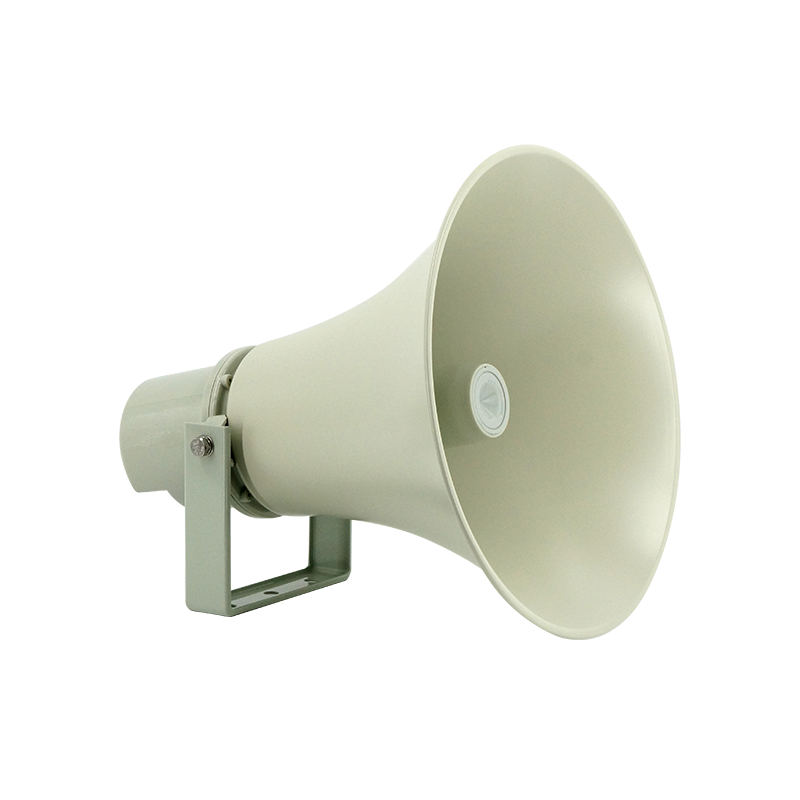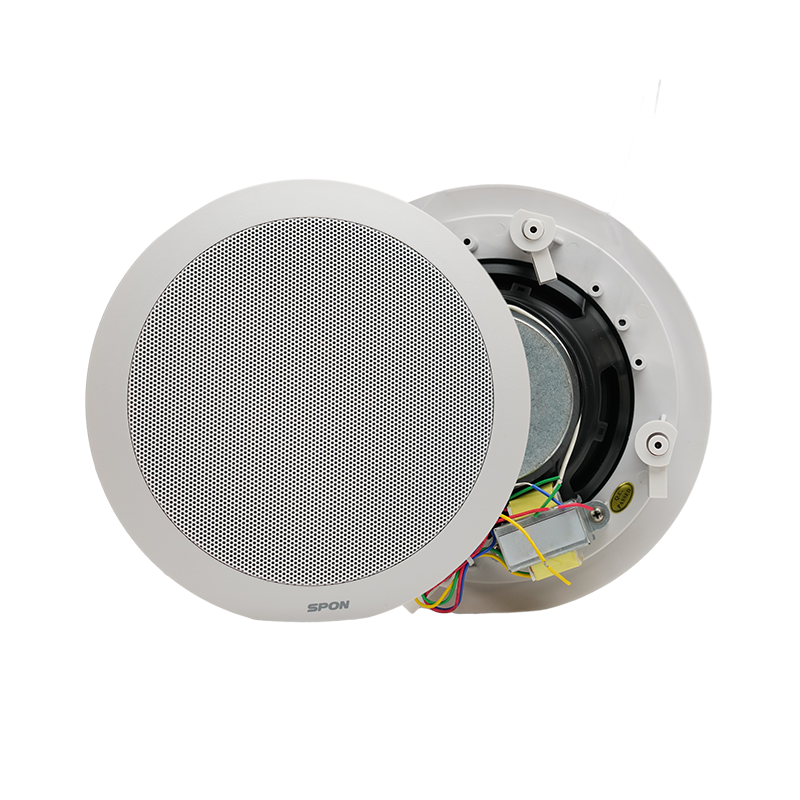The power amplifiers and speakers in public addressing systems are designed with constant voltage, whereas the sound systems in meeting rooms are often equipped with constant impedance speakers. What are the differences between constant voltage and constant impedance?
Constant Voltage Power Amplifier
A constant voltage power amplifier operates with high voltage output, predominantly in a monaural configuration. The final stage output typically involves the use of output transformers, resulting in slightly inferior sound quality but an extended transmission range. This type of amplifier is widely employed in large spaces such as military installations, train stations, docks, schools, and shopping malls.
Commonly employed in public settings.
Monaural output.
High voltage, low current output.
Constant voltage power amplifiers are primarily used in public spaces for public addressing and background music systems. This is because the speakers and amplifiers in public addressing and background music systems are often located at a considerable distance, and a single power amplifier is typically required to connect to multiple low-power speakers. To minimize line losses and prevent the opening or closing of one speaker from affecting the volume of others in the system, constant voltage power amplifiers output high voltage and low current [relatively]. With constant voltage amplification, multiple speakers can be connected in parallel using a standard wire.
Constant Impedance Power Amplifier
Although constant impedance power Amplifier offer superior audio quality, they are limited in transmission distance. They are primarily used in home settings, KTVs, and conference halls.
Commonly used in home theaters, KTVs, stages, and conference rooms.
Stereo output.
Low voltage, high current output.
Because the speakers in venues like conference rooms and stages are relatively close to the power amplifier and do not require connections to many speakers, constant impedance power amplifiers output high current and low voltage. When connecting the power amplifier and speakers, it is advisable to use dedicated audio cables.
The Differences in Output Configurations

Constant Voltage
A power amplifier that maintains a constant output voltage regardless of changes in load impedance, meaning the maximum voltage of the amplified audio signal remains constant, is known as a constant voltage power amplifier. Due to the use of deep negative feedback, this type of amplifier typically employs negative feedback levels of 10~20dB or more. The output voltage is highly stable, and the impact of the load on the amplifier's output voltage is minimal within the rated power range. To reduce power losses in long-distance power transmission, output transformers are used, where higher voltage results in lower transmission line losses.
The output voltage of constant voltage power amplifiers commonly comes in several values, such as 70V, 90V, 120V, etc. It requires the load to have a specific rated voltage. In a constant voltage system, multiple speakers with constant voltage ratings are connected in parallel. The total power of the connected speakers should not exceed the total power capacity of the constant voltage power amplifier.
In constant voltage power amplifiers, if the rated load voltage changes, the power output correspondingly changes. For instance, a speaker with a rating of 100V, 10W connected to a 70V source would become 5W (the power difference is halved when transitioning from 100V to 70V).

Constant Impedence
The amplifier requires a constant output load impedance. In constant impedance power amplifiers, if the load impedance changes, the power output correspondingly changes. For example, an 8-ohm 100W constant impedance power amplifier connected to a 4-ohm load would result in an output power close to 200W.
The Application Differences
Constant voltage speakers are used in large spaces where high audio quality is not a primary concern. Conversely, constant impedance speakers, due to transmission limitations, are typically employed in smaller spaces where sound quality is a more critical factor. Generally, constant voltage outputs are used in public address systems, while constant impedance outputs are preferred for audio systems.
Constant voltage amplifiers offer three output options: 70V, 100V, and 120V. They are suitable for long-distance wired broadcasting and parallel use with multiple speakers, but they may have lower audio quality. On the other hand, constant impedance amplifiers provide better sound quality but are not suitable for long-distance transmission, and they do not allow parallel connection of multiple speakers.